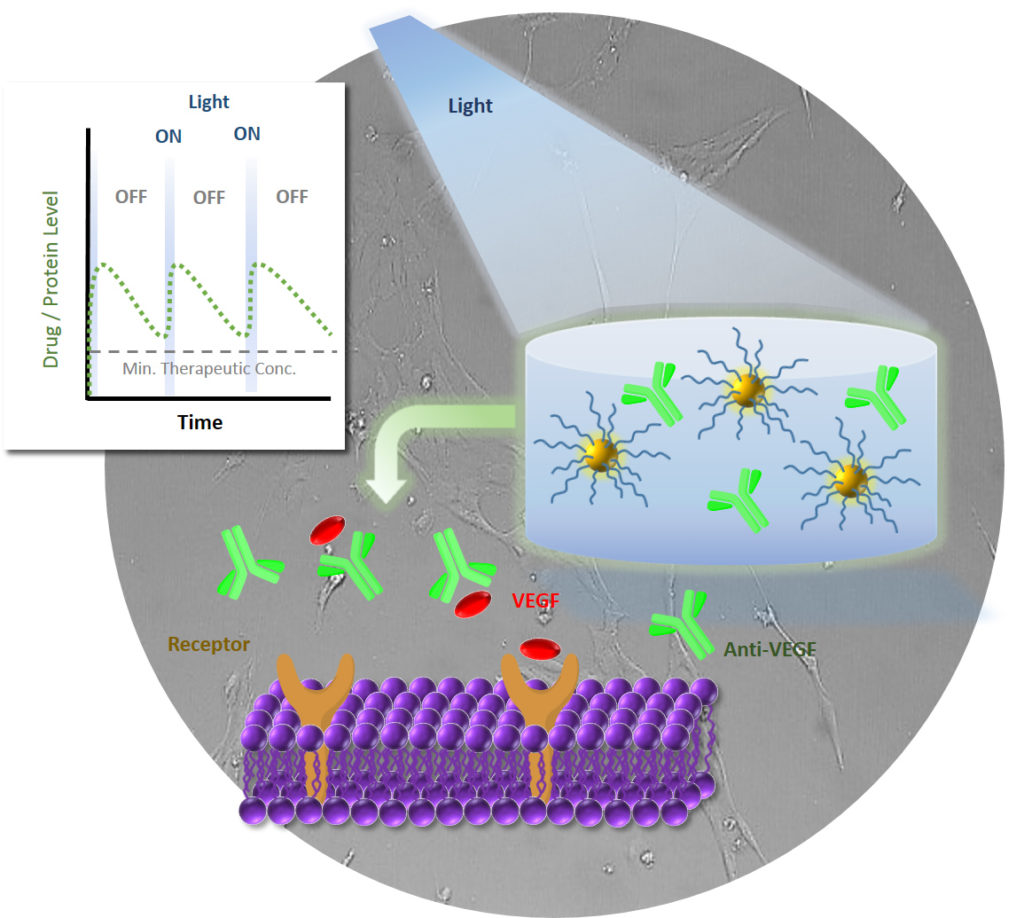
Regular injections into the eye may be a thing of the past for people suffering from age-related macular degeneration
For those with age-related macular degeneration, a trip to the doctor once a month to get an injection in the eye is not uncommon. As excruciating as regular injections in the eye sounds, it’s essential to stop the build-up of fluid in the macula from further obscuring their vision.
However thanks to our researchers, those injections could soon become a lot less frequent – potentially once every few months. In research recently published, we’ve found a way to use light pointed into the eye to release sensitive biomolecular drugs.
The secret ingredient? Gold. Well, nanoparticles of gold to be precise.
What makes gold nanoparticles so great is their ability to absorb light and release it as heat. They don’t do it alone though. A surrounding layer of hydrogel helps out.
Firstly, an initial injection delivers the drug matrix into the retina. Then the drug delivery is triggered by an external light that is shone on the retina. Polymer-functionalised gold nanoparticles and the drug are incorporated within the hydrogel, and when the hydrogel absorbs the light, the nanoparticles turn it into heat. As a result, it heats up the hydrogel from within and the hydrogel softens, releasing the drug. This creates a controlled drug delivery system that can be turned off and on remotely, all ‘on demand’ with a light.

graphic showing how gold light treatment works
As light hits the hydrogel, the gold nanoparticles absorb the light and turn it into heat which softens the hydrogel matrix and accelerates the release of pre-loaded therapeutics. The released therapeutics have been shown to retain their biological activity.
The relationship between the gold nanostructures and the hydrogel system is fundamental to drug delivery, because the gold nanoparticles do not leach out of the hydrogel system during light exposure. Only the drugs are administered. Most importantly, the sensitive biomolecular drugs, like antibodies, still retain their biological activity after the photo-mediated release.
The system is also highly versatile and can deliver different types of drugs. Gold nanoparticles could also be customised to different light wavelengths, which opens up opportunities for other drug delivery. Infrared light, for example, could release drugs used in deep tissue, solid tumour therapy.
This golden drug delivery technique means eye injections could soon become less frequent. Now drug delivery can happen remotely and less invasively. All with a shining light.
Want to learn more about our innovations in healthcare? Find out more about our health research here.


8th October 2017 at 4:54 pm
Hi this sounds really great
Pingback: Age-related Macular degeneration treatment sees the light – and it’s golden — CSIRO blog | By the Mighty Mumford